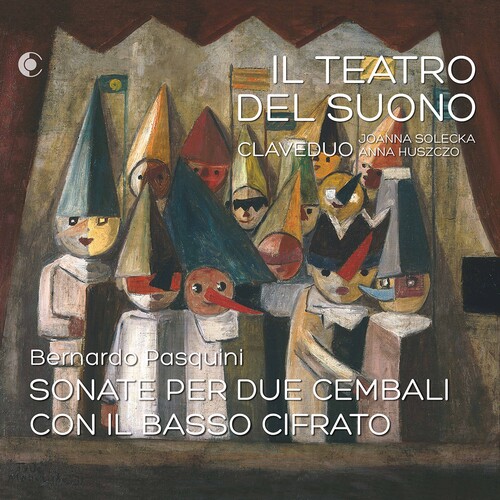Show results for
Deals
- 4K Ultra HD Sale
- 50s Films Sale
- Action Sale
- Alternative Rock Sale
- Anime sale
- Award Winners Sale
- Bear Family Sale
- Blu ray Sale
- Blues on Sale
- British Sale
- Christmas in July
- Classical Music Sale
- Comedy Music Sale
- Comedy Sale
- Country Sale
- Criterion Sale
- Drama Sale
- Electronic Music sale
- Folk Music Sale
- Horror Sci fi Sale
- Kids and Family Sale
- Metal Sale
- Music Video Sale
- Musicals on Sale
- Mystery Sale
- Naxos Label Sale
- Page to Screen Sale
- Paramount Sale
- Rap and Hip Hop Sale
- Reggae Sale
- Rock
- Rock and Pop Sale
- Rock Legends
- Soul Music Sale
- TV Sale
- Vinyl on Sale
- War Films and Westerns on Sale

Il Teatro Del Suono
- Format: CD
- Release Date: 10/8/2021

Il Teatro Del Suono
- Format: CD
- Release Date: 10/8/2021
- Label: Recart
- UPC: 5908285287398
- Item #: 2425798X
- Genre: Classical
- Theme: Baroque Era
- Release Date: 10/8/2021

Product Notes
The autograph of Bernardo Pasquini's collection Sonate per uno o due Cembali con il basso cifrato is held at the British Library of London (Ms. Add. 31501, I). It consists of three small compositions written in intavolatura notation (Tastata, Corrente, Aria), as well as Sonatas and Bassi written in figured bass notation, so-called partimenti. The pieces are marked with dates from 6 May 1703 to 3 December 1704, suggesting the time when the work was created, or possibly copied. The Sonatas and Bassi form a substantial collection of 28 pieces, 14 of each type. The Sonatas are for two keyboard instruments, while the Bassi are for one. The recordings of the Sonatas presented on this album are fully written-out pieces, not a sound recording of improvisations. The partimento notation became a pretext for Joanna Solecka to develop different varieties of polyphonic texture, in accordance with the rules of counterpoint characteristic of the composer's period. In the presented realisations there is thus room for canon, fugue and free imitative polyphony, as well as for contrastive polyphony and nota contra notam texture. The realization of the Sonatas in counterpoint style is a truly fascinating study of elaborate polyphony and composition, requiring insight beyond the ephemeral nature of improvisation. Hopefully the presented interpretations of Bernardo Pasquini's Sonate per due Cembali con il basso cifrato will take listeners not only on a journey through the world of Baroque contrapuntal techniques, but above all will touch their souls with their variety and depth of affect.

